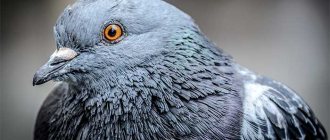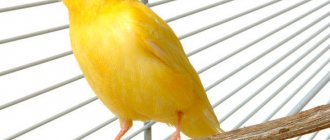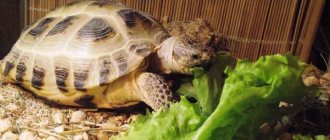In recent years, breeding musk ducks has become popular. These are unpretentious poultry that do not require special nutrition. In addition, Indian ducks have good maternal qualities. This means that the birds hatch the ducklings themselves, so you don’t need an incubator to produce young ones. All these factors contribute to the fact that livestock breeders willingly raise such ducks at home.
How to understand that a duck is ready to become a hen?
Hatching eggs by a duck is a process on which the production of healthy and productive offspring depends. The bird must be ready to hatch the babies, feed them and train them. How can you tell if a duck is fit to be a hen? There are several recommendations for this, following which you can easily identify a caring hen.
- Observe and note birds that are calm but not noticeably lethargic. They should not show aggression.
- If any are found, proceed to testing. To do this, you need to select about five eggs of the correct shape.
- They are placed in the nest and the hen is placed on top - this way her reaction is checked. She must remain in the nest all the time, leaving only to eat and drink, and then immediately return to her place.
- If for five days the bird behaves like its mother, it is completely ripe for this.
- If you notice that an Indian duck is bubbling and making a nest, this is the main sign of readiness to hatch offspring.
Important! Keep other hens away from the hen. The latter may lay an egg in the hen's nest, and then you will not be able to calculate the hatching time of the chicks.
Once you are sure that the duck is ready, you can proceed to the next stage.
It is important to know
The indo-duck, or bird of the Muscat breed, is considered unpretentious in food and the living conditions provided, however, the offspring born in the autumn can be called capricious (late ducklings are especially picky about the length of daylight hours and temperature fluctuations). But don’t despair, because the effort spent on getting a healthy brood pays off later (tastier meat, healthy eggs).
The Indian duck lays eggs only a couple of times a year, therefore, everything must be done to prevent the bird from leaving the roost. What exactly? First of all, allocate a separate room with a nest for her, secondly, balance the diet (during incubation, give food fortified with vitamins and microelements, plus feed strictly at the right time, observing the quantity), thirdly, ensure a flow of fresh air and eliminate sudden temperature fluctuations in the chicken coop. This is the point where you need to focus your attention, because a lack of oxygen is detrimental to all living things.
In the warm season, you can take the hen out for a short walk (this is necessary if the duck has sat on the clutch for a long time and does not want to leave it even for a couple of minutes). If cold and damp days arrive, walks should be canceled (let the ducks sit on their eggs). Following this advice will help maintain the health of the bird. But then what about the delivery of fresh air to the chicken coop? Everything is simple here, because it is enough to make a small window directed towards the south or east and open it correctly (the cold air flow should not be directed towards the duck that is hatching the ducklings).
As for the chicken coop, they put a layer of straw on the floor, more than 3-4 cm thick, and place a drinker and feeder not far from the place where the duck sat down to prevent the cessation of hatching.
It is important not to forget to clean the hatching rooms daily to eliminate the risk of developing a stench and death of the hatched ducklings (it is better to choose the most optimal days: when the birds have become accustomed to the nests and have gone for a walk).
Important: drinking water, like feeders, needs to be changed as often as possible (this is a natural hygienic requirement).
How to select the right material?
The duckling will hatch her clutch on her own, so the poultry farmer needs to choose good material in order for healthy ducklings to hatch.
It is very important to pay attention to the following details when selecting:
- The size and shape of the eggs play a special role: they should not be too small or, on the contrary, large, the shape should be round and even, without dents or scars.
- The optimal weight is 75-95 grams.
- The selected material is not stored for more than ten days. It is prohibited to use eggs from the refrigerator.
- The material should be approximately the same weight.
- The shell should not have any dirt or droppings on it.
The frequently asked question “How many eggs can a duck hatch?” - it is impossible to give an exhaustive answer. It depends on the size of the hen. Under a small-sized bird, 8-12 pieces are placed for hatching, under a medium-sized bird - about 20 pieces, and under a large-sized bird - up to 30. But it is better to put a maximum of 25, otherwise the bird will not cover the future chicks with its entire body, and some will be left without maternal warmth. They will not be able to all hatch at the same time or will die altogether, and the duck will throw them out of the nest. The eggs should be equally warmed by the bird.
Find out when Indian ducks start laying eggs at home.
Laying eggs is a painstaking task and requires caution. This process is carried out gradually so as not to scare the hen. At the moment when she goes away to drink or feed, the farmer must quickly lay new eggs. If the bird is sitting in the nest, then slowly lay one egg at a time. If you follow this mechanism, the location of the eggs under the hen’s body will be uniform, and the maturation of the embryos will occur at approximately the same time.
Features of egg production of birds
Indian ducks occupy a somewhat separate place in the duck family. Firstly, on modest food they quickly gain weight compared to other species, secondly, they do not need a pond or a lot of space, and thirdly, they are calm and quiet. After six months (6-7 months), females become sexually mature and begin their first clutch. In warm, good conditions, birds can lay eggs immediately after 5 months.
The incubation instinct manifests itself twice a year - in spring and autumn. In total, the laying period takes from one and a half to two months.
Indo-laying hen?
Of course, poultry farmers are interested in the question of how many eggs one turkey can lay and whether it can be kept only as a laying hen. Despite the fact that this bird is raised for meat, its egg production is quite high - on average about 80-100 eggs per year. It is not uncommon to receive up to 120 pieces per year. Indo duck eggs are large, white with a slight bluish tint, weighing about 70 grams. Their nutritional value has been proven to be much higher than that of chicken products.
How many days does a turkey duck hatch her eggs before her ducklings hatch?
The Muscovy duck hatches a clutch for 33-35 days, but the period may increase due to the large number of eggs under the bird and their uneven heating, as mentioned above. The process is also affected by the temperature in the poultry house. During incubation, the duck may leave the nest several times to eat. It is necessary to place the feeder next to the bird; there must be large volumes of clean water so that the bird can rinse in it.
With its wet down, it moistens the masonry to supply the embryos with oxygen. On the thirtieth day, the nest is checked, because small mutes may already be born. The hatched chicks must be taken from the nest, and the remaining shells must be thrown away.
Read more about what to feed muscovy ducks.
The nest is inspected at the moment when the duck leaves the hatching site. Mute mutes are usually born within three days. The first babies are the strongest, the subsequent ones are born weaker. If the remaining eggs have been lying around for a long time, then they need to be checked. To do this, place the egg to your ear; if you hear a rustling sound, the duckling is alive. Also pay attention to the temperature of the egg - if it is cold, the embryo has frozen and such material is disposed of.
Requirements for false eggs
When laying eggs, it is recommended to follow several rules:
- collected eggs for laying are stored in a dark place at a temperature of 15°C and a humidity of 80% for no more than 18 days;
- they are held in a vertical position with the tip up;
- regularly scroll vertically by 90-180° so that the yolk does not dry out near the inner wall of the shell;
- It is strictly forbidden to wash eggs - this can lead to the destruction of the protective film that regulates humidity;
- keep them clean to avoid infection, which can lead to protein decomposition;
- eggs in which the embryo has died are eaten by the hen or thrown out of the nest.
You can check eggs for suitability for hatching as follows: if the egg is suitable, then in a container with warm water it settles at the bottom.
Caring for a hen during the brooding period
To breed good offspring, you need to take care of the hen. During hatching, it is strictly forbidden to disturb or frighten her. Each bird must have its own nest; it always chooses the place itself. The nest should be in a secluded place, away from other birds and animals. Having decided to approach the bird, you need to warn it of your approach in a calm tone so that it does not get scared and abandon the nest.
Important! There should be no metal objects, broken glass, cords or other debris in places where the duck walks. These birds are too fond of tasting all bright and shiny objects, and these in turn lead to the death of ducks.
The farmer must provide the bird with regular walking and feeding. The duck is allowed out for a walk for twenty minutes and always once a day to a pond or place where it can swim.
Productivity indicators
The egg production rates of musk ducks are never stable, as they are influenced by the following factors:
- Age and health of the bird.
- Living conditions.
- Quality of feeding.
- Lighting level in the poultry house.
- Season.
At six months, a duck lays no more than 8 eggs, and at 8 months their number doubles. At 9 months, Indian ducks lay up to 22 eggs, at 10 months there are already 25. After this, a decrease in indicators begins, that is, after a month the number of eggs decreases to 22, and by the year it returns to the level of eight months - 16 pieces.
When productivity indicators decline, such eggs are not used for breeding, and the turkey ducks themselves are often sent for meat. Since duck eggs are used for food in small quantities, it is unprofitable to keep hens for longer than 10-11 months. On average, a musky duck is capable of laying up to 100 eggs in 365 days; record holders increase this figure to 120 and even 140. The weight of the egg reaches 60-70 grams, the incubation period lasts from 34 to 37 days.
Solving possible problems
No one can foresee the difficulties that will arise during the expected hatching period, but the farmer must be prepared for them. It is necessary to understand common problems and find out how to deal with them without negative consequences for the hen and future chicks.
Indian woman doesn't want to sit on eggs
Factors negatively affecting duck:
- This often happens due to the wrong location; it may be too noisy or too sunny. Move the nest to another place, and the bird will find it itself. Good bird care will ensure quick results.
- If eggs are taken from a turkey duck too often. To solve this issue, you need to lay about twenty eggs at once and wait until the female sits in the nest.
- There are parasites in the nest. It is best to find a new place to hatch the ducklings.
- There are rats or mice living nearby, which frighten the bird. A calm environment must be ensured.
- The physical condition is not suitable for the role of a hen. The duck may be too young or, on the contrary, already old. Then more greens and vitamins are added to the animal’s diet.
As soon as all the conditions are satisfied, the bird will immediately begin to hatch its offspring.
Indian duck sits on eggs for longer
On average, a bird incubates a clutch for about thirty-five days, sometimes these figures can be increased by several days. Often, in warm seasons, chicks hatch on the thirtieth day, and in cold weather, on the thirty-fifth. But what to do if the Indian duck sits for more than 35 days? If the ducklings have not yet hatched, it is worth checking the clutch. If the egg is cold and no rustling is heard in it, the embryo has died or it was empty. Such eggs are taken when the hen leaves the nest for swimming or eating.
The hen throws eggs out of the nest
If you see eggs thrown out of the nest, this does not mean that the problem is with the hen - it all depends on the fetus. If a duck identifies an egg with a dead embryo or an empty one, she will throw it out and continue to hatch the rest until healthy ducklings hatch. If you suddenly decide to move the nest to another place, the bird may for this reason throw out the entire clutch from it.
Did you know? Duck feet have no blood vessels or nerve endings. Therefore, they can easily swim in icy water and walk for hours on cold snow and ice.
Why does a duck throw eggs out of the nest onto the floor?
Sometimes it happens that when the owner comes to check his hen in the morning, he sees one or two eggs near the nest, already cold. Why does a duck throw out eggs on its own?
Indian girls
The most likely reason is that the duck throws out empty (unfertilized) eggs or those in which the embryo died at an early stage. During development, the embryo begins to release heat outward through the shell, and the duck feels this. The egg is empty or has a dead embryo and is cold. Instinct tells the bird to get rid of unnecessary things so as not to waste its precious heat.
Another common reason for a duck throwing eggs or leaving the nest altogether is that the hen is being too disturbed during incubation. This is the sin of inexperienced poultry farmers. They inspect and correct the nest every day and touch the masonry. This cannot be done! The bird itself takes care of the cleanliness and safety of the nest and turns the eggs itself. All the owner of a Muscovy duck must do is provide the bird with drink, food and peace.
What to do with the brood immediately after hatching?
After the first young appear in the nest, they are carefully moved to another place so that the duck does not stop hatching the remaining babies and does not accidentally crush the newborns. For muzzles, a warm box or box is prepared in advance, with a soft cloth laid at the bottom. The container should be heated using a heating pad or heating device. Monitor the temperature inside the box (box), it should be about +32 °C. After hatching and drying all the muzzles, they are returned back to the mother.
By this time, you can add chicks from the incubator of the same age to the duck. Usually an Indian duck accepts all babies without exception. On the first day of life, newborn ducklings are fed hard-boiled eggs. You can add cottage cheese and barley flour. Greens are served finely chopped.
Did you know? The neck of ducks is quite short, although it has more vertebrae than a giraffe.
In order for babies to see food and react to it, it is better to sprinkle food on dark paper or another surface. To teach ducklings to use a water bottle, they are dipped into water with their beaks. Vitamins are added to the diet of chicks to improve skeletal development. Often, ducklings repeat all processes after their mother, who, in turn, is a good and caring teacher.
Useful tips from experienced poultry farmers
The best time to hatch Muscovy ducklings, given the long incubation period, is from the beginning of May to the end of July. The August ducklings will still experience warm days, they will grow up in the sun and will be quite strong before the onset of cold weather.
Duck food
Before the start of the breeding season, it is necessary to feel the ducks and make sure they are fat. Thinness, like excess fat, negatively affects egg production and egg quality.
During the incubation process, the duck leaves the nest once a day - goes to the toilet, eats and drinks, and bathes. As a rule, she does this in the morning. While the duck is busy with its business, the poultrykeeper can seize the moment and check the nest and inspect the clutch.
The hen is fed grain - oats, barley or wheat. This is a hearty food that allows the bird to fill its crop and not feel hungry until the next day. The hen does not need grass or vegetables.
They are in no hurry to release the duck and its brood onto the pond. The fact is that small ducklings have not yet developed fat glands, their down quickly gets wet. Once in the water, the duckling may drown. The mother and chicks are released into deep water no earlier than 3 weeks after hatching.
Important ! For the reason stated above, ducklings are given drinking water in a low dish so that the baby cannot fall into it and die.
Some poultry farmers take the chicks from the duck and immediately lay a new batch of eggs for incubation. It is undesirable to do this; continuous incubation of chicks for two months exhausts the bird too much. The duck may die.
Often two Indian ducks sit on one nest. They can be seated in separate houses, or they can be left to incubate as a couple, if the girlfriends do not fight and the area of the nest allows not to suppress the clutch. After hatching, the ducklings are left in the care of one duck; the second will soon begin laying eggs.
4.4 5 votes
Article rating
Is it possible for an Indian duck to lay other eggs?
An Indian duck will hatch other people's offspring without any problems: chicken and even goose eggs. If the hen is hatching her babies, then around the fifth day you can discreetly add chicken ones. After the chickens hatch on the 21st day, they must be taken away immediately so that the turkey does not peck at them. If you only put chicken ones, then you can put up to 25 of them in a nest. Due to their larger size, goose eggs will fit about 8-9 eggs. Hatching will last about a month.
Hatching ducks is a labor-intensive process that requires care and attention from the poultry farmer. It is worth carefully preparing for it. Your future income depends on how many ducklings hatch. Only by following all the recommendations will you get a brood of strong ducklings. You can hatch offspring twice a year, so you should carefully monitor the timing of egg laying and the birth of mutes.
All about hatching
To successfully produce offspring, the farmer must create all the necessary conditions for incubation of eggs. Since Indian ducks are heat-loving birds, it is very important that the female is kept warm. The nest is best made from a wooden or plastic box, with a thick layer of straw placed on the bottom. To awaken the incubation instinct, it is necessary that the clutch in the nest consist of at least 20 eggs, so there is no need to pick them up immediately after laying. After this, the duck settles into the nest and sits on the clutch.
Very often, Indian ducks choose their own place for a nest, so it is important to carefully inspect the entire territory.
However, difficulties lie in the timing of the start of laying and the start of incubation: leaving eggs in the nest for a long time can lead to their damage. Few farmers will be able to say exactly how long the female sits in the nest and whether she sits at all or is just getting ready. Therefore, leaving all the eggs under the hen at once is also not entirely correct; to do this, you need to put dummies in the nest and navigate by them. Fresh food
It is recommended to pick it up a day or two after demolition. You need to observe the bird and calculate in time how many days it takes to start incubation, and at this time lay the rest of the clutch.
The entire brooding period for musk ducks takes from 30 to 35 days. Exactly how many days a female incubates depends on the time of year and conditions in the poultry house. As a rule, in the warm season there is a tendency to reduce the time to 30 days. How musk chicks hatch, watch the video (The Life of a Country Priest).
How many eggs and when should you lay them?
To hatch ducklings, you don’t have to wait until one female lays all the eggs and sits on them herself. If you have several females, then you can put the entire clutch under one. A ready-made hen can be easily distinguished by its external characteristics:
- the duck is ruffled and fluffs its feathers;
- strayed from the herd, does not walk much;
- hisses and drives away other individuals.
For Indian ducks, a nest is prepared in a secluded place and eggs are laid. Their number will depend on the size of the bird and can range from 10 to 20 pieces. Typically, the average female can hatch about 15 chicks. Products for incubation are selected fresh, of good size and correct shape, without defects or cracks. The incubation product must be stored at a temperature not lower than 10 degrees for no more than 10 days. You can lay the clutch under the Muscovy duck in the evening, as well as when the female comes out to eat or go for a walk.
What to feed
In the first 1-3 days after the ducklings hatch, they are fed boiled eggs, cottage cheese and herbs, just like chickens. Further steps: transfer to grain mash, which is made up of finely crushed chaff, boiled vegetables or root vegetables, finely chopped greens, and bran. They should be moist but not sticky. You can cook crumbly porridge, skim milk, and sour milk. Give duckweed if you can get it nearby, give more grass.
In order not to prepare food, you can feed the turkey chicks with compound feed. There are starter mixtures that can be given to ducklings in the first 1.5 weeks of life.
For 1.5-week-old ducklings, meat waste, boiled potatoes, vitamin preparations, and mineral premixes are mixed into the food. This is necessary to prevent rickets and make the immune system stronger. Feeding frequency:
- 1st week – 5-6 times, but little by little;
- up to a month – 4-5 times;
- 1-2 months – 3-4 times;
- before slaughter, as well as adult birds - 2-3 times.
When the ducklings have grown to at least a month old, they can be released into the flock. Adult birds will no longer pose a danger to them.
Conclusion
Raising ducks on your own plot can be a very profitable household activity. Relatively unpretentious musk ducks will bring not only tender and warm fluff, a lot of tasty meat, but also eggs.
These 70-gram eggs can be eaten (they are even much more nutritious than chicken eggs), but you can also raise ducklings from them to expand the duck flock or sell the young to other poultry farmers.
The calm disposition of these Indian ducks will not cause concern to family members and guests, and the entire process of duck breeding (from hatching eggs to raising ducklings) will appeal to all children who will happily care for this poultry.
By observing all the conditions for proper nutrition and development of the Muscovy duck, you can get not only high egg production of laying hens, but also additional income and joy from breeding these wonderful birds!











